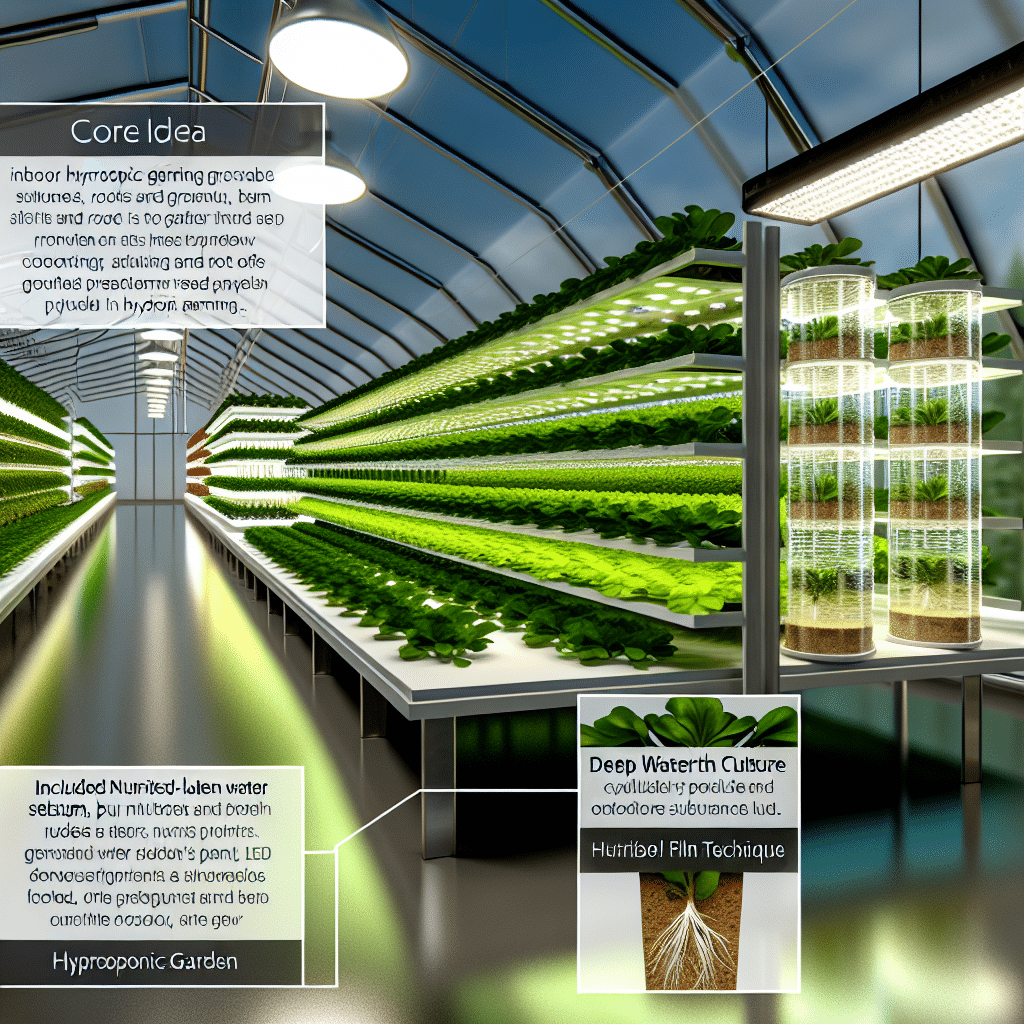In a world where sustainable agriculture is becoming increasingly essential, hydroponic gardening is emerging as a revolutionary solution. This innovative method of growing plants without soil promises greater yields, faster growth, and efficient resource use. But what exactly is hydroponic gardening, and why is it gaining so much attention?
Why Choose Hydroponic Gardening?
Hydroponic gardening is a method of growing plants using a nutrient-rich water solution in place of soil. This technique allows for precise control over the nutrients that plants receive, leading to faster growth and higher yields compared to traditional soil-based gardening. Let’s delve deeper into the benefits that make hydroponic gardening an attractive choice for modern cultivators.
Maximized Space and Productivity
One of the standout benefits of hydroponic systems is their ability to maximize space. By utilizing vertical farming techniques, growers can cultivate multiple layers of plants within the same footprint, significantly increasing productivity. This makes hydroponics an ideal solution for urban settings where space is a premium.
Efficient Use of Resources
Hydroponic systems use water much more efficiently than traditional soil gardening. In fact, they can use up to 90% less water. The closed-loop systems often employed in hydroponic setups recycle water, reducing waste and conserving this precious resource. Moreover, the absence of soil eliminates the need for pesticides, resulting in cleaner, healthier produce.
How Does Hydroponic Gardening Work?
Now that we’ve covered some of the benefits, let’s explore the mechanics behind hydroponic gardening. Unlike traditional methods, hydroponics relies on several key components to deliver nutrients directly to the plant roots.
Nutrient Solutions
In hydroponic systems, plants receive their nutrients from a water-based solution enriched with essential minerals. This solution can be tailored to meet the specific needs of the plants being grown, ensuring optimal growth conditions at all times.
Delivery Systems
There are various ways to deliver the nutrient solution to the plants. Some common hydroponic systems include:
1. **Nutrient Film Technique (NFT):** A thin film of nutrient solution flows over the roots, providing a constant supply of nutrients.
2. **Deep Water Culture (DWC):** Plants are suspended in a nutrient-rich solution with their roots fully submerged.
3. **Drip System:** Nutrient solution is dripped slowly onto the plant roots, ensuring consistent nutrient delivery.
Growth Media
While hydroponic gardening does not use soil, plants still need support to anchor their roots. Materials like coconut coir, perlite, and rockwool are commonly used as growth media. These substrates provide stability and ensure that roots have access to oxygen and nutrients.
Is Hydroponic Gardening the Future of Agriculture?
Given its numerous advantages, hydroponic gardening is increasingly being seen as the future of agriculture. However, like any method, it comes with its own set of challenges. Initial setup costs can be high, and the systems require precise monitoring and maintenance to ensure optimal plant health. That said, the benefits often outweigh these challenges, making hydroponics an attractive option for both small-scale hobbyists and large-scale commercial growers.
The adoption of hydroponic gardening is likely to continue growing as technology advances and sustainability becomes a focal point in agriculture. With its ability to produce high yields in limited space while conserving resources, hydroponics offers a glimpse into a more sustainable and efficient future for food production.
In conclusion, hydroponic gardening represents a groundbreaking approach to plant cultivation. Its numerous benefits make it a compelling option for anyone interested in growing plants more efficiently and sustainably. As the world continues to seek innovative solutions to food production and environmental conservation, hydroponics is poised to play a crucial role in shaping the agriculture of tomorrow.




